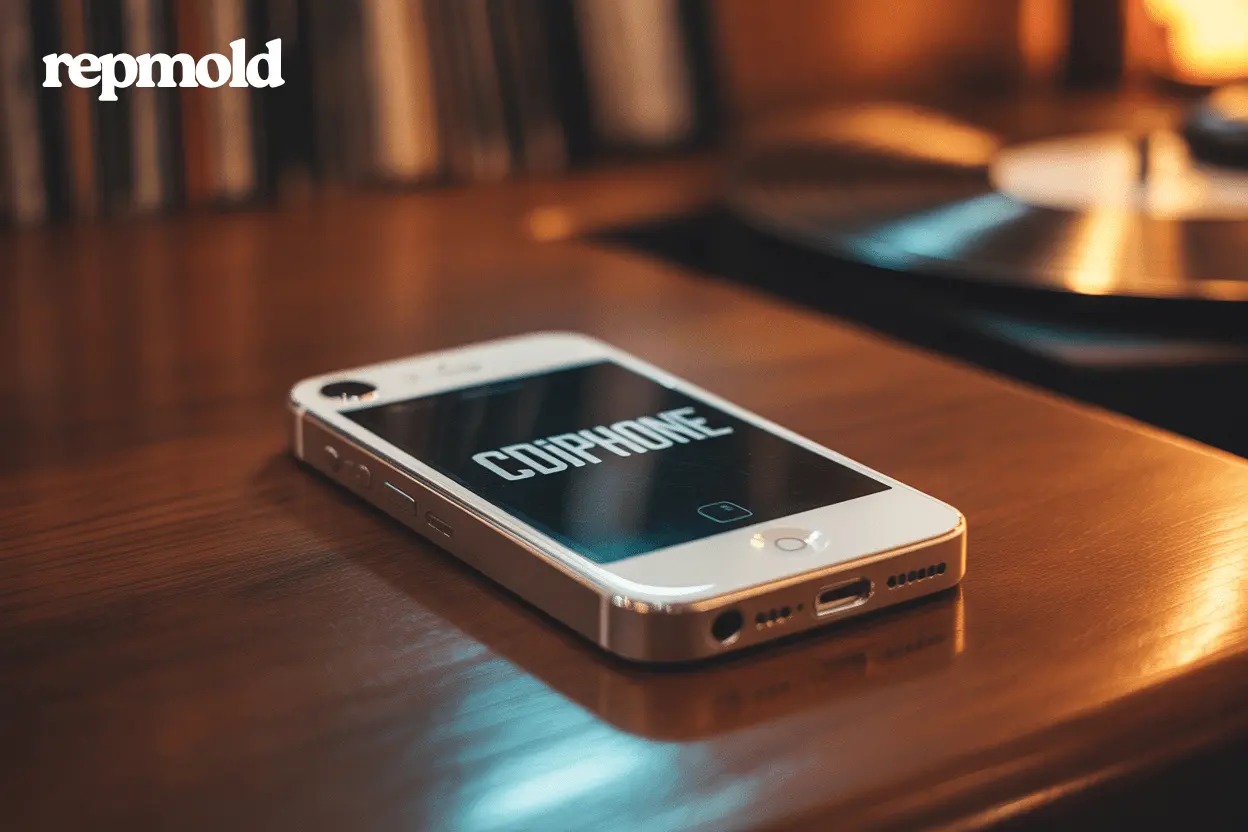Introduction : Why Cdiphone Matters in 2025
In today’s world, music lives on phones, apps, and cloud storage. Yet millions still own CDs. Many are rare albums, live concerts, or special editions never released online. These collections hold memories and unmatched sound quality. However, there is one big problem. iPhones do not support CDs directly. You cannot insert a CD or connect a drive easily.
This is where the cdiphone comes in. The term refers to tools, methods, and ideas that connect CDs with iPhones. It is not an official Apple product, but it solves a real need. With cdiphone, users can move music from physical discs into their iPhone libraries. This process creates a simple bridge between old formats and modern technology.
The importance of the cdiphone goes beyond convenience. Music lovers can preserve rare songs with better audio quality than streaming. Collectors can digitize entire libraries and keep them safe. Professionals, such as musicians or educators, can use CD-based material on iPhones for work or study. In 2025, cdiphone keeps CDs relevant while making them portable and accessible anywhere.
What Is Cdiphone?
The word cdiphone is a blend of “CD” and “iPhone.” It describes the idea of connecting compact discs with Apple’s iPhone. It is not an official Apple product. Instead, it is a community-driven concept created by users.
Cdiphone covers tools, methods, and accessories that make CDs work with iPhones. For example, it can mean using external CD drives with adapters. It can also mean ripping CD music on a computer and syncing it with an iPhone. In some cases, it even refers to apps or cloud services that help transfer CD files.
This keyword exists because many people still value CDs. They own old albums, rare tracks, or recordings not found on streaming services. At the same time, iPhones dominate modern life as our main music devices. Cdiphone represents the bridge between these two worlds.
In simple words, cdiphone is the solution people use to carry CD music on iPhones. It allows users to preserve collections, enjoy high-quality audio, and relive the nostalgia of physical discs. While not official, it has become a popular term for anyone seeking to merge the past with the present.
Why People Still Need CDs on iPhone
Even in the age of streaming, CDs still matter. Many people hold treasured collections from the past. These discs remind them of childhood, concerts, or special gifts. Nostalgia is powerful, and the cdiphone keeps those memories alive.
Moreover, CDs deliver higher audio quality than most streaming services. Streaming often compresses files to save space. CDs, however, keep the full detail of the recording. For audiophiles, this difference is easy to hear. With a cdiphone, they can enjoy the best sound on their iPhones.
In addition, some music is simply not available online. Rare albums, old live shows, or special editions may never reach Spotify or Apple Music. A cdiphone setup ensures that no track is left behind. Users can digitize their unique CDs and listen anytime.
Finally, offline listening is another major benefit. Streaming needs the internet or data. CDs, once transferred, can be played anywhere without a connection. This is ideal for travel, remote areas, or saving mobile data. With the cdiphone, old music becomes both portable and reliable.
How Cdiphone Works : Step-by-Step Process
Cdiphone works through a few simple methods. The first involves using an external CD drive. However, iPhones cannot power these drives directly. Therefore, you need adapters and a powered USB hub. With the right setup, the drive connects, but playback is limited. iOS cannot read CD files natively. So this method is tricky and often unreliable.
The best approach is much simpler. Start by ripping CDs on a PC or Mac. Use ripping software like Exact Audio Copy for Windows or XLD for Mac. Choose the audio format you prefer, such as MP3, AAC, or ALAC. Once ripped, import the tracks into iTunes or Apple Music. Then, sync your iPhone via USB cable or Wi-Fi. This method is reliable, Apple-approved, and preserves quality.
There are also cloud-based options. You can upload ripped CD files to Google Drive, Dropbox, or iCloud. Later, access them directly on your iPhone. With Plex Media Server, you can even stream entire libraries. This option is ideal for those with large collections.
Finally, several apps make the process much easier. iTunes and Apple Music handle syncing well. VLC Media Player supports almost any audio format and wireless transfers. Evermusic is great for cloud playback and playlists. Foobar2000 works well for audiophiles who want advanced audio control. Together, these tools form the cdiphone experience, blending physical discs with digital convenience.
Best Audio Formats for CD-to-iPhone Transfers
When transferring CDs to your iPhone, the audio format matters a lot. Different formats affect quality, file size, and playback. With a cdiphone, you can choose the one that fits your needs.
MP3 is the most common choice. It is small and universal. Almost every device and app supports it. However, it uses compression, which reduces sound quality slightly. Still, for casual listeners, MP3 is more than enough.
AAC is Apple’s preferred format. It offers better quality than MP3 at similar file sizes. It works smoothly with iTunes, Apple Music, and iPhones. For users inside the Apple ecosystem, AAC is a perfect balance.
ALAC stands for Apple Lossless Audio Codec. It preserves the full quality of the original CD. Sound is crystal clear, but file sizes are much larger. Audiophiles and serious collectors prefer ALAC for its accuracy.
Here’s a quick comparison:
| Format | Quality | File Size | Best For |
| MP3 | Compressed | Small | Everyday listening |
| AAC | Medium-Loss | Moderate | Apple ecosystem users |
| ALAC | Lossless | Large | Audiophiles, archiving |
In summary, choose MP3 or AAC if you want smaller files and convenience. But if you care about sound quality and have storage space, go with ALAC. With cdiphone, all these formats work well, giving you flexibility for every situation.
Top Benefits of Using Cdiphone
Cdiphone offers many benefits that make it valuable in 2025. First, it provides a simple way to keep music collections alive. Old CDs often carry sentimental value, rare albums, or special editions. By using cdiphone methods, these treasures can live on digitally.
Second, the cdiphone ensures high-quality playback on iPhones. CDs hold better sound than compressed streaming files. When transferred in formats like ALAC, the clarity remains intact. This makes every track sound closer to the original recording.
Third, storage becomes highly flexible. You can save files directly on your iPhone for offline listening. Alternatively, you can back them up in iCloud or use third-party cloud services. This means you can access your CD music anytime, anywhere.
Finally, the cdiphone improves security and organization through modern apps. Tools like Apple Music, VLC, and Evermusic let you manage playlists, add tags, and even fetch album art. With these features, your CD library becomes well-organized and easy to navigate.
In short, the cdiphone keeps your CDs relevant, safe, and portable. It combines nostalgia with modern convenience, offering the best of both worlds.
Limitations and Precautions to Know
While the cdiphone is useful, it does come with certain limits. First, iPhones cannot directly read CDs. Apple devices lack the hardware and built-in support for disc file systems. This means you cannot just plug in a CD and play.
Second, you need extra tools to make it work. For example, external CD drives often require a powered USB hub. You also need ripping software on a computer before syncing files. Without these steps, transferring CDs is not possible.
Third, some users try jailbreaking to bypass restrictions. However, this is risky and not recommended. Jailbreaking removes Apple’s protections, voids warranties, and can harm security.
Finally, storage is another key consideration. Lossless formats like ALAC take up large amounts of space. Therefore, you must plan whether to use local storage or cloud backup.
In short, cdiphone is practical, but it requires careful setup. With the right tools and awareness, you can avoid problems and enjoy a smooth experience.
The Future of Cdiphone and CD Technology
The future of cdiphone looks more promising than many people expect. Retro formats are making a strong comeback. Vinyl records already proved that old technology can find new life. Similarly, CDs are regaining interest among collectors and music lovers.
As this trend grows, the cdiphone may inspire official solutions. Companies could create adapters, apps, or cloud-based tools. These products would make CD-to-iPhone transfers simpler and more accessible for everyday users. Apple or third-party brands might even see it as a niche market worth supporting.
Moreover, the cdiphone could become a bigger trend in music technology. People value both convenience and authenticity. CDs deliver high-quality sound, while iPhones offer unmatched portability. Together, they create a unique blend of nostalgia and modern digital power.
In short, the cdiphone is more than just a workaround today. It may evolve into a recognized part of future music experiences. The demand for preserving and enjoying CDs shows no signs of disappearing.
Conclusion : Keep Your CDs Alive with Cdiphone
Cdiphone is more than a concept. It is a bridge between old CDs and modern iPhones. With it, you can preserve your favorite albums and enjoy them anywhere. It offers quality, convenience, and flexibility that streaming alone cannot match.
Most importantly, the cdiphone makes the process simple and practical. You don’t need to replace your CDs or abandon them. Instead, you can easily transfer or stream them using trusted methods and apps.
So, don’t let your music collection fade away. Try a cdiphone and keep your CDs alive. Relive the nostalgia, enjoy high-quality playback, and carry your library in your pocket. Your music deserves to stay timeless—and the cdiphone makes that possible.

